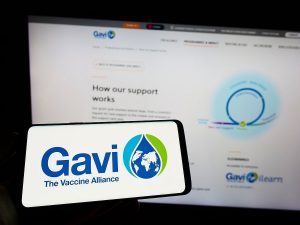A 17-year-old Minnesota teen runs a red light, killing a father and his 10-year-old daughter.
A 16-year-old Missouri girl — her driver’s license only days old — dies when she turns onto a road and is slammed by a tractor-trailer.
A 16-year-old Maine teen breaks her neck after crashing her vehicle.
What do all of these recent tragedies have in common? The young drivers had all been suspected of texting while behind the wheel. The problem of distracted driving among teens continues, with public service campaigns aiming a spotlight on the issue to raise awareness among teenagers and their parents.
“Distraction is really something that’s no surprise, since teens are connected to their cellphones,” said Rich Romer. He’s state relations manager for the American Automobile Association in Washington, D.C.
“But we’ve found that while only 6 percent of teens ages 16 to 18 say it’s acceptable to text or email while driving … 34 percent have sent one while driving in the last month,” Romer added. “This ‘do-as-I-say, not-as-I-do’ culture permeates all the way down to our youth.”
Motor vehicle crashes are the leading cause of death among teenagers in the United States, according to the U.S. National Highway Traffic Safety Administration (NHTSA). Distracted driving claimed 3,450 lives in 2016 alone, with teen drivers accounting for the highest percentage of all drivers reported as distracted at the time of the fatal crash. Another 400,000 people were injured in distracted driving incidents in 2015.
Other startling statistics: According to TeenSafe, a smartphone control and monitoring service for parents, texting while driving raises a teenager’s risk for having an auto accident by 400 percent. And 40 percent of teens have said they were passengers in a car while the driver — who may have included their own parent — was using his or her smartphone.
But a 2016 AAA Foundation for Traffic Safety study revealed that the top distraction for teen drivers isn’t their cellphone, but the presence of other passengers, who often are teenage friends. Other passengers accounted for 15 percent of teen driver accidents, according to the research, while 12 percent stemmed from texting or talking on a smartphone.
“All distractions aren’t electronic,” said Russ Martin, director of government relations for the Governors Highway Safety Association in Washington, D.C. “Distraction comes in many forms.”
Texting is considered especially perilous because it involves using the eyes, hands and brain at the same time. Drivers who send and receive text messages take their eyes off the road for about five seconds. At 55 miles per hour, that’s equivalent to driving the length of a football field with eyes closed, according to the NHTSA.
“We have to imagine that the amount of attention we’re bringing to this issue is getting through to some teenagers, [but] the problem is it’s hard to accurately measure,” Martin said. “It’s very difficult to get the data. Drivers don’t always admit they’re distracted, there may not be witnesses, and sometimes there’s no evidence to clue a police officer into it.”
One anti-distraction measure some parents employ includes pay-for-service apps that help monitor teen driver activities or shut down cellphone use while driving. TeenSafe produced the iPhone TeenSafe Control App, which pauses and schedules app, data and phone use to protect teens against distracted driving.
Similar smartphone apps include Canary, which notifies parents of unsafe driving practices; DriveSmart, which mutes incoming texts and sends calls directly to voicemail; and DriveScribe, which monitors teen driving and rewards safe driving habits.
But Romer cautioned parents against relying solely on apps and other technological solutions to protect their children. “They may be of some assistance, but really, the best countermeasure we would recommend are involved parents,” he said.
“Research has shown that involved parents who do supervised practice driving, sign a parent-teen agreement [detailing driving rules], and parents who set good examples can really reduce crashes and violations among teen drivers,” Romer added.
Romer, Martin, the NHTSA and TeenSafe offered these tips to parents to help their teen drivers avoid distractions:
- Talk to your teen about the responsibility of safe driving, impressing upon him or her that the odds are against teen drivers surviving a crash when driving while distracted.
- Put your own phone down while driving, especially when your teen is in the car and watching you.
- Turn off the radio when teen drivers are first learning how to drive. Loud music can be very distracting while learning the basics.
- Set specific consequences if a teen driver doesn’t follow the rules.
More information
The U.S. Centers for Disease Control and Prevention provides a Parent-Teen Driving Agreement.
Source: HealthDay
Copyright © 2025 HealthDay. All rights reserved.

















